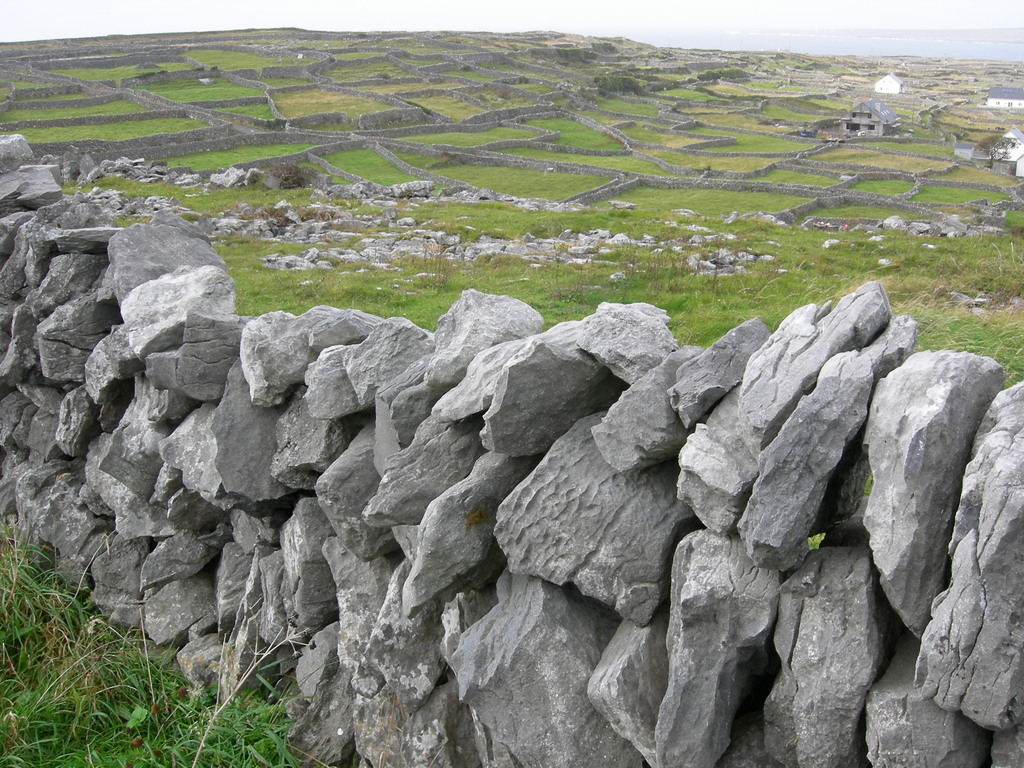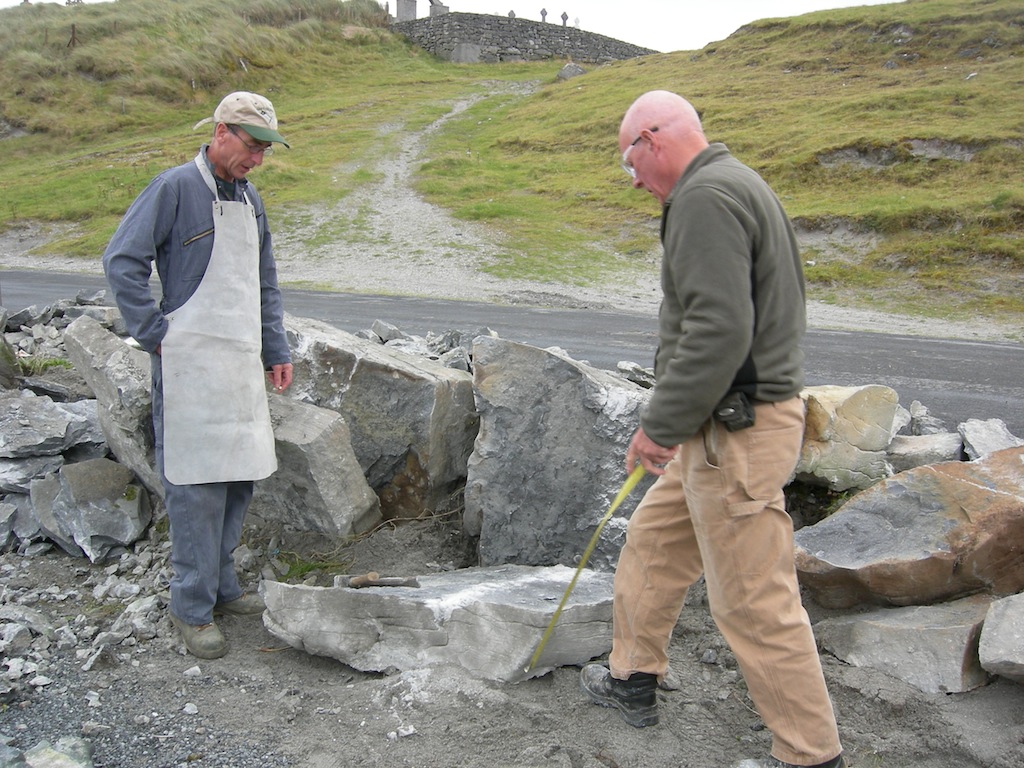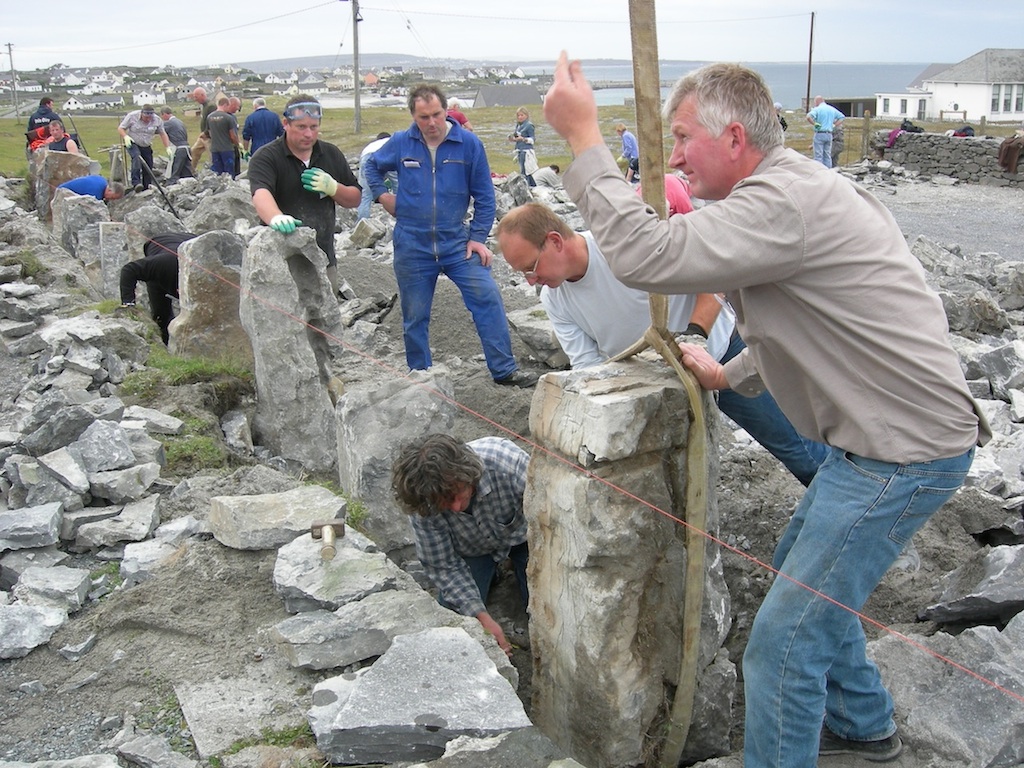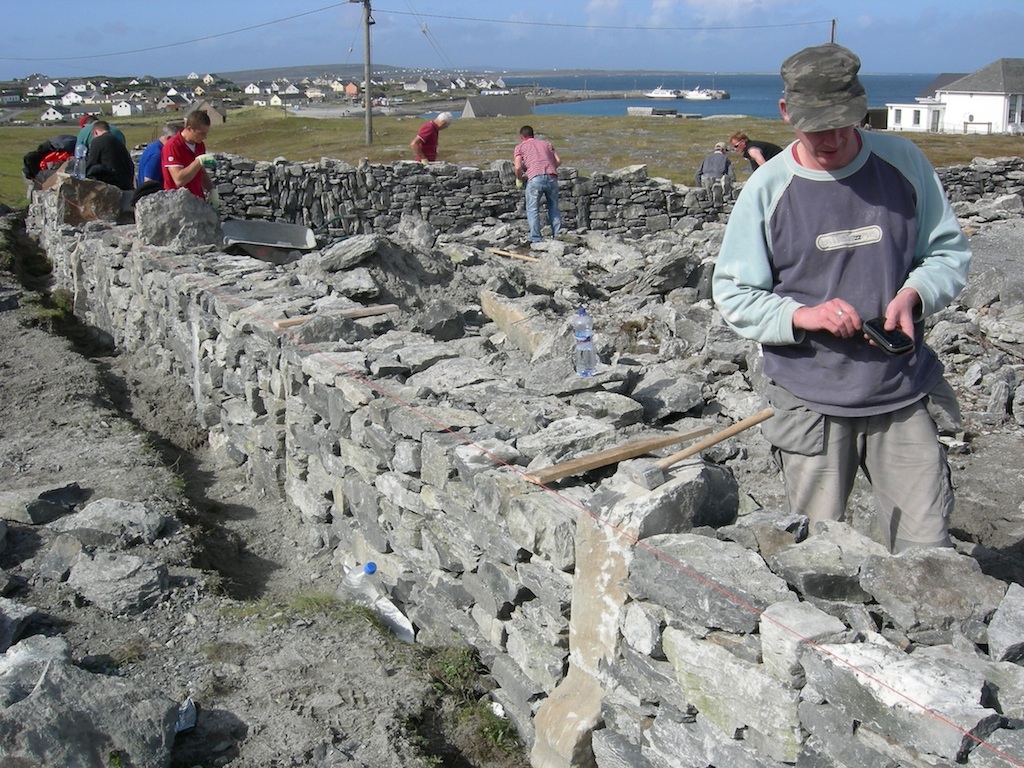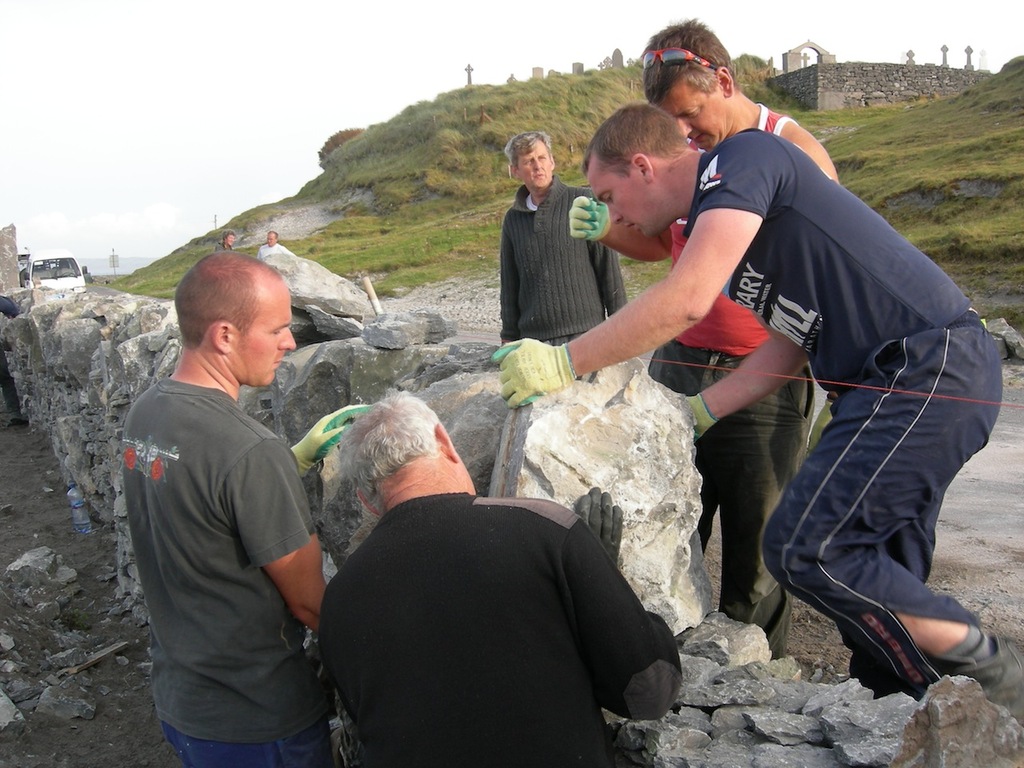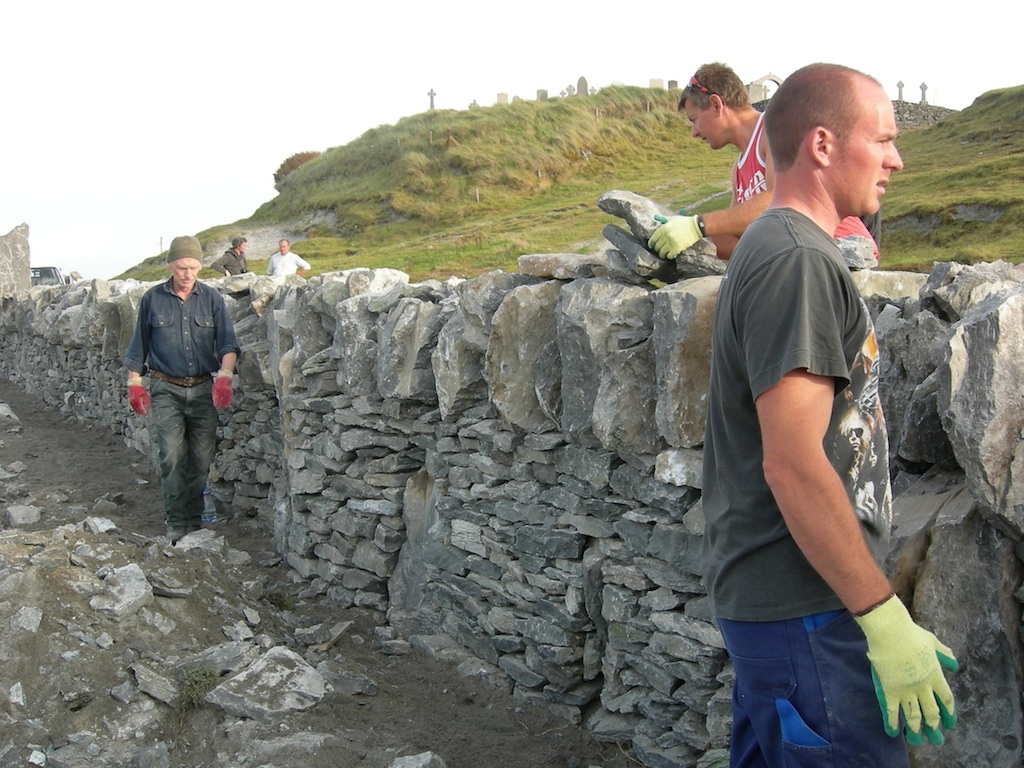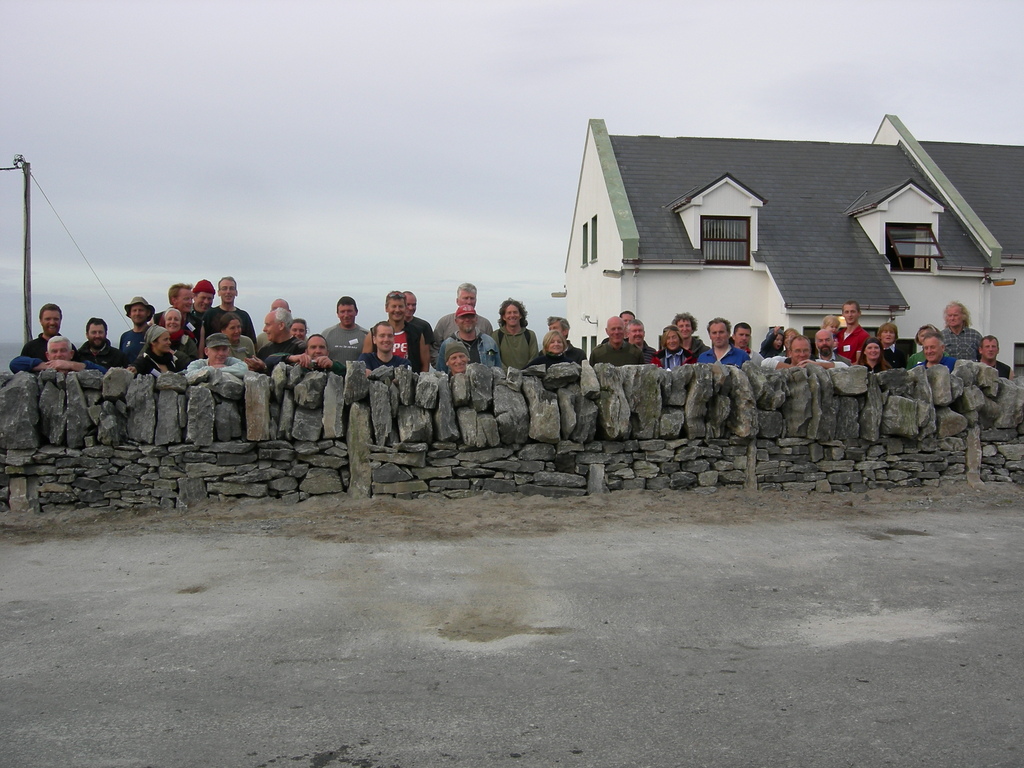

Mt. Rosea Staircase - First Stage
|
Inis Oirr Dry Stone Walling Workshop Over the last weekend in September of 2011 I was invited to help instruct at the Inis Oirr Dry Stone Walling Workshop. Inis Oirr is one of three islands that form the Aran Isles off the coast of Galway in the Republic of Ireland. These islands are renowned for their intricate system of field walls that have their origins in neolithic times and have been in constant use up to the present day. The wall system dominates the entire landscape and the diversity of walling styles within it is in all probability unique. To promote intrest in this rich heritage the County of Galway has sponsored a dry stone walling workshop on Inis Oirr that will now be held on an annual basis. One of the main organisers is Patrick McAfee, an internationally recognised expert on traditional building techniques. Participants of the three day event came from all over Ireland as well as Nick Aikin, a master waller from Scotland and myself coming from the Lake District in England. This year's project was to replace an expediently built mortared wall with a more traditional dry stone structure. Approximately 50 participants were taught basic dry stone principals by building a local type of wall known as Feidin. With this style, very large stones, resembling grave stones in size and shape, are set vertically and perpendicular to the wall face, thus dividing the wall into segments that can be worked on by a person on either side of the wall. Between these stones, who's Gaelic name translates as 'mothers', smaller stones(children) are laid horizontally to form a double skinned wall. Once the wall of children has reached the height of the mothers, very large stones (fathers) are laid as coping. |
||
|
|
|
|
|
|
|
|
|
|
|
|
|
|
|
|
|
|
|
|
|
|
|
|
|
|
|
|
|
|
|
|
|
|
|
|
|
|
|
|

